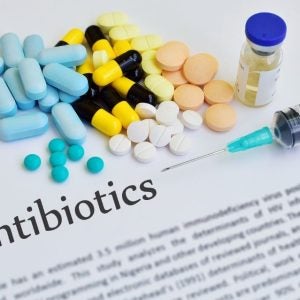Pharmacological Treatment of Depression
A worrying photograph
The World Health Organisation (WHO) declared that in 2020, depression was the most widespread mental illness in the world and, in general, the second most widespread illness after cardiovascular diseases. The number of cases, especially during and since the Covid-19 pandemic, has seen a notable increase in the number of diagnosed mental illnesses.
The WHO estimates that today there are approximately one billion people who suffer from a mental disorder. In fact, depression affects approximately one in 15 adults (6.7%) every year. It is also estimated that one in six people (16.6%) will experience depression at some time in their life.
The pharmacological treatment of depression and, consequently, the development of increasingly effective drugs in the treatment of depression can help save the lives of thousands of people around the world. To understand it, we must first start from the definition of depression: what it is, its causes and some of its symptoms.
What is depression?
The term depression refers, in a generic way, to any depressive condition. However, depressive disorders are different and can be distinguished based on symptoms or causes.
If we classify disorders according to symptoms:
- Major Depressive Disorder (MDD)
- Persistent Depressive Disorder (PDD)
- other depressive disorders
According to the causes:
- Premenstrual Dysphoric Disorder (PMDD)
- depressive disorders associated with or due to another physical condition
- Iatrogenic depressive disorder, ie. that induced by substances and/or drugs
Depression, in general, can cause feelings of sadness and lack of interest in daily activities and can also lead to a variety of emotional and physical problems, resulting in reduced work and social abilities.
Symptoms of depression
Symptoms of depression can range from mild to severe and include:
- perpetual feeling of a mood of sadness
- loss of interest or pleasure in everyday activities
- changes in appetite and sudden weight loss or gain
- excess or lack of sleep
- loss of energy or increased fatigue
- physical and aimless restlessness in movements or, on the contrary, slowing down of movements or speech
- feeling of uselessness and guilt
- difficulty thinking, concentrating, or making decisions
- thoughts of death or suicide
To be considered as such, the symptoms linked to a depressive phenomenon must last at least two weeks and represent a change in mood and behaviour compared with the period before the diagnosis.
Suitable medications and how they work
Pharmacological treatment of depression works by increasing the activity of certain chemicals produced by our brain called neurotransmitters, such as serotonin, norepinephrine and dopamine. Increasing the activity of these transmitters allows you to reduce the main depressive symptoms which, for proven effectiveness, require approximately 3-4 weeks of action.
There are different types of medications to treat depression. The most common are part of two families:
- SSRI – Selective Serotonin Reuptake Inhibitors (eg. paroxetine and sertraline) the mechanism of action intervenes at the level of specific neuronal receptors that prevent the reuptake of serotonin
- SNRIs – Serotonin and Norepinephrine Reuptake Inhibitors (eg. venlafaxine and duloxetine) – can block the reabsorption (reuptake) of the neurotransmitters serotonin and norepinephrine in the brain
SSRI drugs are generally the first choice in the treatment of anxiety disorders and depression, as they have fewer side effects than other antidepressants, which can lead to complaints such as nausea, light-headedness, dizziness, nervousness, anxiety, fatigue, reduced appetite and increased blood pressure levels.
The new latest generation drugs to fight depression
In recent months, important molecules with different mechanisms of action have been added such as, for example, esketamine and brexanolone . This type of drugs has completely different mechanisms of action from those described above since they act on different neurotransmitters: esketamine on glutamate (a natural amino acid constituent of proteins) and brexanolone on GABA (a substance naturally secreted by our cerebral cortex, in able to reduce emotional tension and limit the increase in stress).
Since there is a significant percentage of depressed patients who do not respond correctly to current drugs (an estimated 30-40% of cases), resistant clinical cases could benefit from these new types of drugs capable of acting differently and on different neurotransmitters.
Are antidepressant drugs safe ?
With constantly growing use worldwide, the pharmacological treatment of depression is safe. This is demonstrated by a document published in the journal Jama Psychiatry, which states that “There are no reasons not to take them when necessary”. Through a clinical study, a group of European, Asian, US and Canadian researchers drew very clear conclusions regarding the safety of antidepressants, evaluating possible differences between patients treated with antidepressants and healthy people. On the basis of what has been observed, Marco Solmi, researcher in the neuroscience department of the University of Padua and one of the authors of the study, testifies that “Today we know that there is no proven contraindication that can discourage the use of antidepressants” and adds: “We found that all adverse health outcomes reported in observational studies were actually most likely due to the disease for which the antidepressants were prescribed.”





